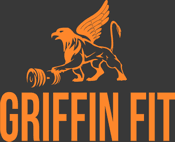Muscle Imbalances
by charlie smart in Training

Today we will be looking at muscle imbalances and how common they actually are, and a few quick and easy ways to prevent them. Many of us, without even noticing have muscles that are imbalanced.
Muscles work in pairs you see, for example the hamstrings and the quadriceps, the biceps and triceps and so on. Often, muscle imbalance is the cause of many injuries. Ever notice that some muscles are stronger than others?
Example: A lady works a full time 9-5 desk job, she sits for the majority of the time that she is working. Due to her screen and chair height, she slouches over her desk and therefore her neck and shoulders take the majority of the hit, causing not only a kyphotic (upper curvature) of the spine, but also her back and chest muscles to become imbalanced. Due to these prolonged amounts of time spent sitting each day her hip and abdominal muscles become very tight, her quadriceps (front thigh) are very overactive, her hamstrings (back thigh) are tight and her glutes (buttocks) are inactive. This will in time pull on her lower back and cause pain and bad posture as a result.
The lady in the above example has a perfectly normal set of imbalances, it happens to many of us who sit at a desk for the majority of our days. If you see yourself in this position and are not sure what you can do to help to improve your postural alignment, follow the steps at the bottom of the blog to help to reduce the risk of and to help alleviate these imbalances.
Don’t Neglect Any Muscles
It is often found that when working out in a gym, many of us tend to train the superficial muscles rather than the deeper muscles too. Meaning the ones that are more visible are trained more, and although they may look good – this can cause some big imbalances in the body. For instance when training your core, most people think of the abdominal muscles but forget that the core is actually the entirety of this area – front, back and sides!
Ever noticed when doing a plank, towards the middle to end of the exercise you start lowering towards the floor and you do not have the strength to stay up in that streamline position? This is because we often neglect the mid to lower back and side core muscles which help to keep your core nice and sturdy. Planks helps with core strength, balance and muscle endurance.
Lastly, another big example that I’m sure a lot of people can relate to or can recall someone in the street looking this way – as though they cannot put their arms down by their sides? Again, training those superficial muscles and missing out other important ones. A very common imbalance to see, particularly in men is a lot of work being put into the arms and chest but neglecting the upper back and lats.
How do I recognise if I have tight or imbalanced muscles?
– Annoying aches, pains and spasms in muscles
– Stiffness or finding it more difficult to move in the normal way
– Soreness or tightness
– Lower back pain
– Instability
What might cause my muscles to be tight or imbalanced?
– Sitting for prolonged periods of time
– Stress can cause the nervous system to put additional pressure on muscles
– Overworking and underworking muscles when training
– Injury – this may cause muscles to compensate for each other and therefore become imbalanced and tight
How do I alleviate my imbalances and tight muscles?
Imbalances caused by sitting:
1. Keep your ears in line with your shoulders
2. Take regular breaks and walk around more
3. Roll your shoulder blades back when you feel yourself yourself slouching
Imbalances and tightness caused by injury/overworking and underworking certain muscles:
1. Let the weaker side/muscles set the tone for your workout
2. When exercising, start with your weaker points
3. Fix the underlying problem, e.g. foam roll tight muscles, target flexibility and do tests to find imbalances before jumping straight in
4. Consult a fitness or medical professional for more advice on how to help
Take home point: we all get imbalances, once recognised, these should be worked on to help prevent them worsening and causing long term muscle and joint problems.
